Best acoustic pianos 2025: Budget to premium instruments for home and studio
If you’re considering buying a new acoustic piano and want some advice, don’t worry – pianos are our forte

With incredible advancements in sampling technology and physical modelling software emulation over the last couple of decades, digital pianos are getting ever closer to being able to replicate the feel, sound and response of the best acoustic pianos. We're fans of the digital route here at MusicRadar, sure, but for a proper, 100 per cent authentic acoustic piano experience, nothing tops a real acoustic piano.
The feel of the hammers as they bounce off the strings, transmitted back through your fingers by the action's mechanical components. The way the steel strings vibrate and resonate off the wooden soundboard, the incredible dynamic range after which the instrument was named, the exquisite jumble of sympathetic resonances that build up within the body of the instrument – all of this adds up to an experience that can be very well approximated by today’s technology, but never bettered by it.
For many of us there are, of course, some obvious advantages to a digital piano over an acoustic one. Digital instruments are cheaper, very low maintenance, don’t require regular tuning by a strange old dude who was friends with your grandma, they’re nowhere near as heavy and are generally much easier to live with. Much of this is down to the fact that they can be used with headphones for more-or-less silent practice sessions, a major tick in the box if your kids are starting to learn the piano.
That said, there’s a certain something about an acoustic piano. Chosen well, they are often lifelong companions, forming a major centrepiece in your home, potentially over many generations. We know of several kids who are learning piano on the same instrument their parents and grandparents learned on, and that makes up a lot of what’s special about an acoustic piano.
Maybe you want to step up from a digital piano to the real thing, or to start your children on the right path to proper piano mastery, or you just want a beautiful piece of furniture to have a tinkle on now and again. Whatever the reason, if you’ve reached the stage where you want to purchase a new acoustic piano, where do you start? That’s where this guide comes in. A new acoustic piano represents a considerable investment, so we’ve compiled this list of the best acoustic pianos you can buy today, together with a few pointers on what to look out for when considering a pianistic purchase.
Best acoustic piano: Our top picks

There's no argument that acoustic pianos are expensive items, with even a basic upright capable of commanding well over five figures. Thankfully, Yamaha provides a relatively affordable gateway into the acoustic universe via the sub-$5,000/£4,000/€4,000 Yamaha b1.
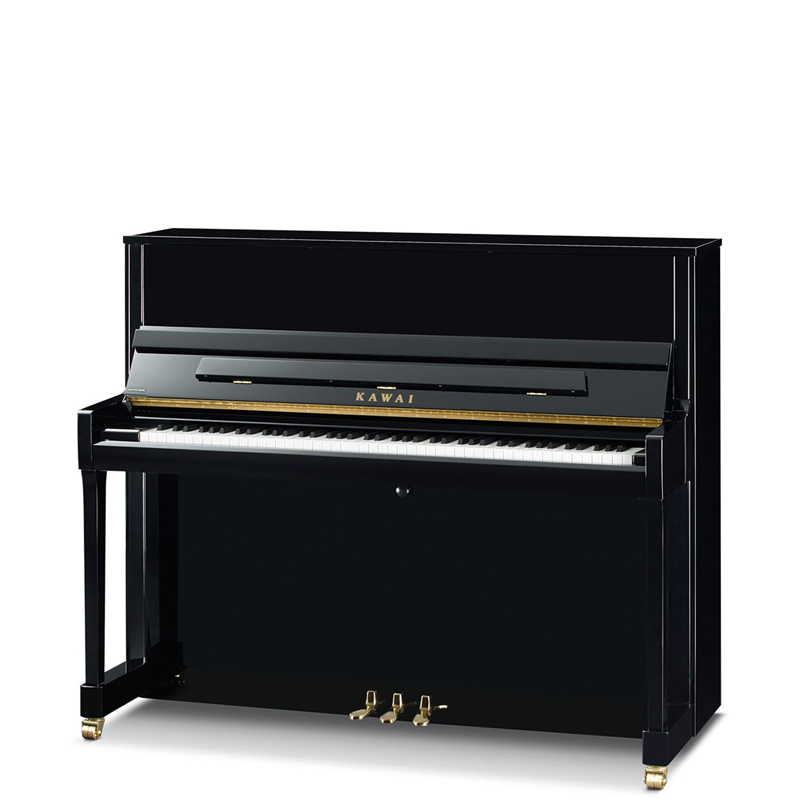
you're upgrading from a digital piano. Its 122cm height makes it perfect for small spaces, but it's still a decent size and its large soundboard provides a remarkable depth of tone.

A perennial favourite amongst discerning pianists, Yamaha's U1 is the company's most popular upright piano. Solidly built and available in several finishes with a 10-year warranty, and with a warm, smooth tone, it's a fantastic all-rounder for home learning, studio recording or professional performance.
Best budget

1. Yamaha b1
Our expert review:
Specifications
Reasons to buy
Reasons to avoid
There's no argument that acoustic pianos are expensive items, with even a basic upright capable of commanding well over five figures. Thankfully, Yamaha provides a relatively affordable gateway into the acoustic universe via the sub-$5,000/£4,000/€4,000 Yamaha b1.
A reliable, well-built and lively-sounding piano that won’t break the bank, the b1 is understandably one of Yamaha’s most popular upright models. Equally suitable for home, education or for studio recording duties, the slim and compact b1 comes in a variety of finishes including polished ebony, natural beech satin, dark walnut and mahogany, with a five-year guarantee on all acoustic parts.
The b1 is made in Yamaha's Indonesia factory rather than in Japan, which makes it less expensive to produce. This saving can be passed on to the customer in the form of a lower retail price, which is great news for budding pianists on a budget looking for an affordable instrument from a big-name brand that doesn't compromise on quality.
Read our full Yamaha b1 acoustic piano review
Best for beginners
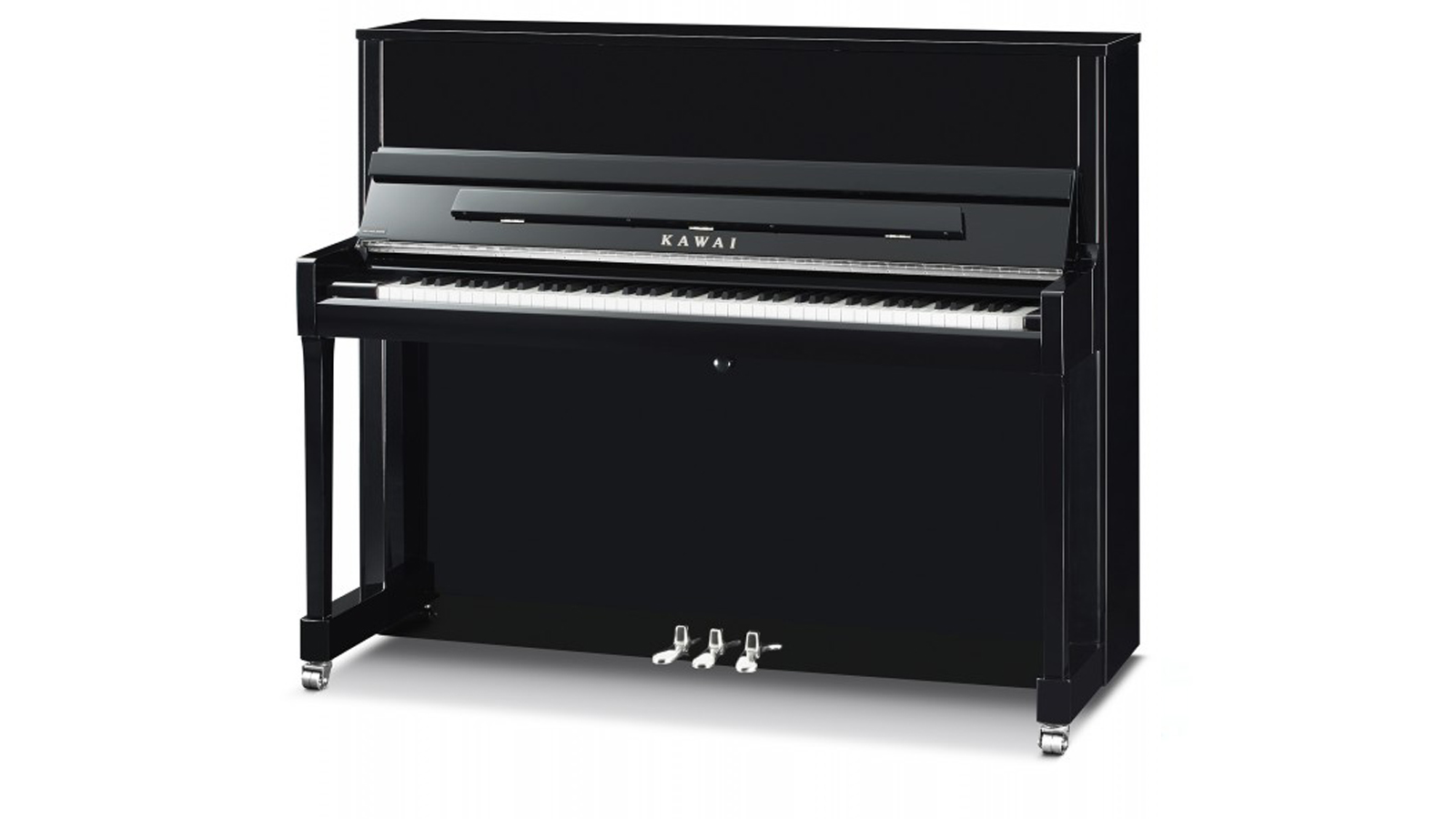
2. Kawai K-300
Our expert review:
Specifications
Reasons to buy
Reasons to avoid
One of the UK's best-selling pianos, the Kawai K-300 makes a great choice if you're upgrading from a digital piano. Its 122cm height makes it perfect for small spaces, but it's still a decent size and its large soundboard provides a remarkable depth of tone.
The K-300 features Kawai's Millennium III upright keyboard action which is a hybrid of traditional wooden components and strong, light ABS carbon parts designed to provide a responsive and involved playing experience. Other refinements include extended key length for greater control, a soft-fall lid for safe closing, double-felted hammers with mahogany cores, a solid spruce tapered soundboard and an extended music rest.
For a not insignificant extra chunk of cash, the K-300 can be ordered with Kawai's ATX-4 hybrid system, combining all the traditional characteristics of a fine acoustic piano with a silent system that disconnects the hammers from the strings. This couples the benefits of the Millennium III action with a sampled Shigeru Kawai SK-EX concert grand piano, plus a handful of other sounds, relayed through the built-in headphone output.
Best silent piano

3. Yamaha U1 SH2
Our expert review:
Specifications
Reasons to buy
Reasons to avoid
A perennial favourite amongst discerning pianists, Yamaha's U1 is the company's most popular upright piano. Solidly built and available in several finishes with a 10-year warranty, and with a warm, smooth tone, it's a fantastic all-rounder for home learning, studio recording or professional performance. However, with the addition of Yamaha's SH2 Silent Piano system, the U1 takes on a whole other dimension.
Offering the best of both acoustic and digital worlds, the SH2 system allows for the piano’s hammers to be disconnected from the strings, the performance information instead converted by a row of optical sensors into data that triggers an internal sound module. This contains binaurally-recorded samples from both the Yamaha CFX and the Bosendorfer Imperial grand pianos, combined with physically modelled resonances to provide a convincing digital piano sound through the sound module’s headphone output. As a bonus, you also get a selection of 18 other sounds, including electric piano and string patches.
The SH2 isn’t a cheap option, adding over $1,000 to the cost of a stock U1, but the end result is a truly versatile instrument that's capable of silent practice sessions as well as proper piano performances, overcoming many of the downsides associated with a traditional acoustic piano.
Best baby grand

4. Kawai GL-10
Our expert review:
Specifications
Reasons to buy
Reasons to avoid
Like the K-300 upright piano elsewhere on this list, the five-foot Kawai GL-10 baby grand piano is fitted with Kawai’s widely acclaimed Millennium III carbon fibre action. It’s fantastically light, incredibly precise, with repetition speed up from the previous incarnation, the GM-10K.
Since piano keys are essentially levers, longer keys make playing easier and provide a more even response from the front to the back of the playing surface. The GL-10 thus features the same increased key length found on the K-300 upright, so it plays more like a longer grand piano costing much more.
For its size, the GL-10’s tapered, solid spruce soundboard serves up a pretty amazing sound in terms of depth of tone, complexity and sustain. The combination of extended keys, soft-close fallboard and the Millennium III action gives the GL-10 a completely professional, top-of-the-line feel but at a very affordable price, representing extraordinary value.
Best sound
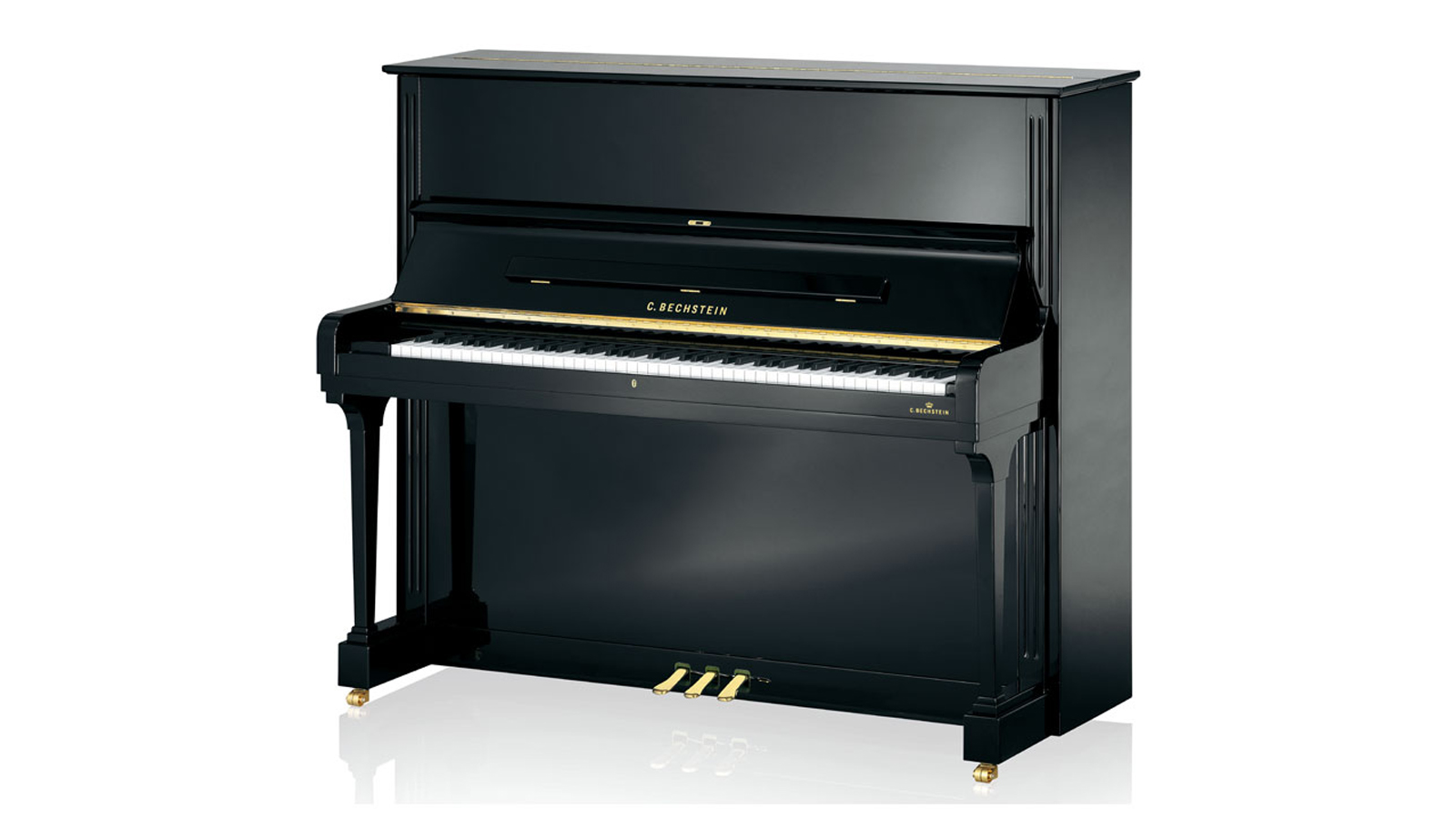
5. C Bechstein Concert 8
Our expert review:
Specifications
Reasons to buy
Reasons to avoid
The voice of a grand piano in the footprint of an upright, the C Bechstein Concert 8 has been widely regarded as the pinnacle of excellence in the piano world for decades.
Bechstein are known for spending almost fanatical amounts of time finessing and regulating the action on their pianos, and it shows here. The keyboard’s fluid sensitivity matched to the sheer volume that the Concert 8 can produce delivers an extraordinarily wide and controllable dynamic range that’s incredibly fun to play.
With an acoustic assembly similar to that of the grands in the Masterpiece class, the tone and voicing of the Concert 8 is very close to that of one of their grand pianos. So much so that if it weren’t for the difference in profile between this and a C Bechstein grand, you’d barely notice you were playing an upright. This is a sublime piano, which is why it commands such a premium price.
Best with Bluetooth
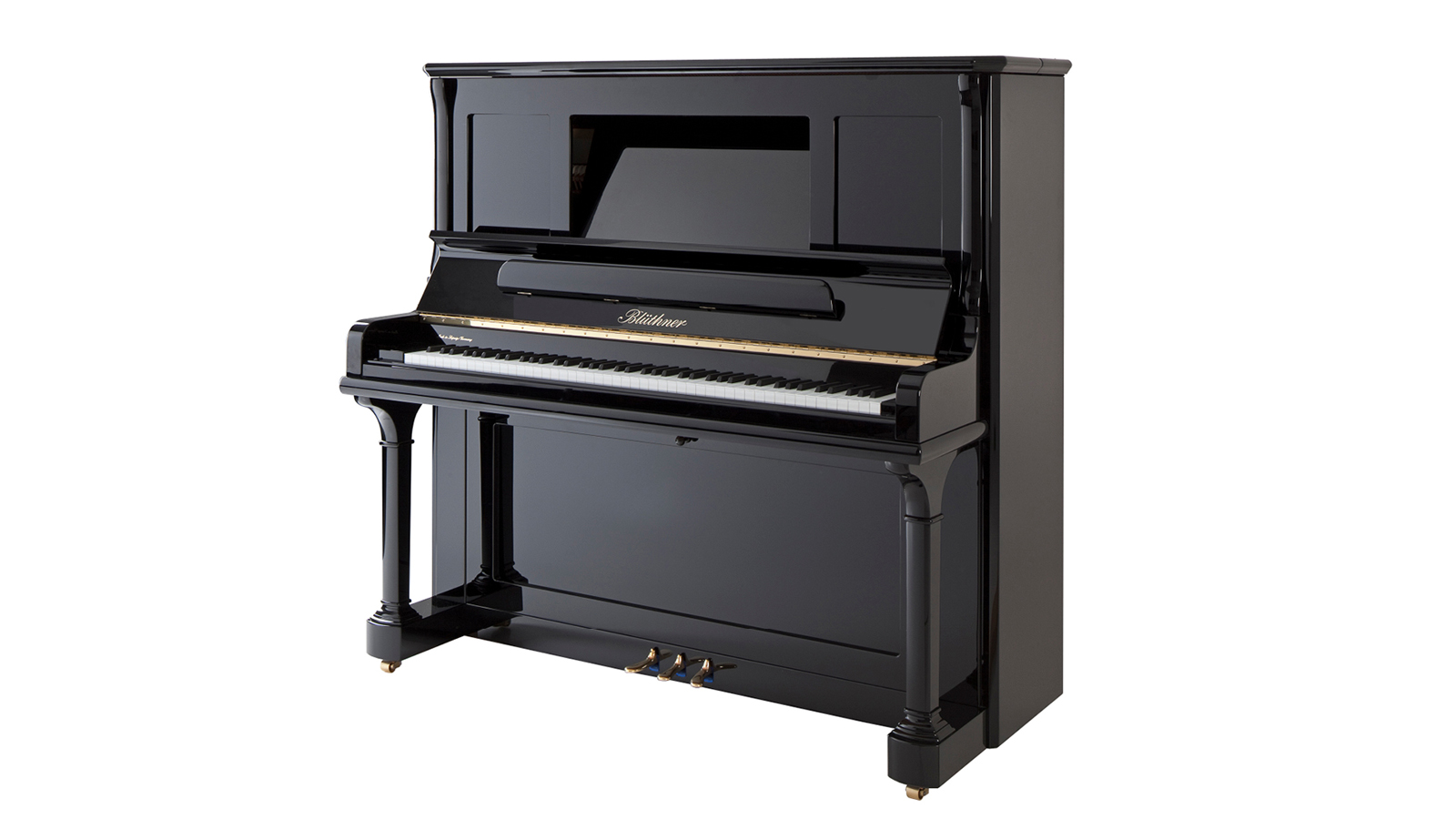
6. Blüthner Model S145
Our expert review:
Specifications
Reasons to buy
Reasons to avoid
Manufactured by the same family in Leipzig since 1853, Blüthner pianos have a stellar reputation for excellence that continues to make them a force to be reckoned with today. The Model S145 is the flagship model in their upright collection, and standing 145cm high it's the largest upright piano currently on the market.
Expanding the standard size of an upright piano on all fronts, the 145S has been designed to provide an unparalleled piano playing experience, making it a great choice for when the sound of a grand piano is needed in a smaller space.
Like all Blüthner pianos, the S145 can be fitted with the Blüthner eVolution system, which combines the technology found in the company’s digital pianos with an internal piano silencer system. The system also offers features such as Bluetooth audio connectivity, a Bose speaker system and MIDI functionality.
Best Euro-upright
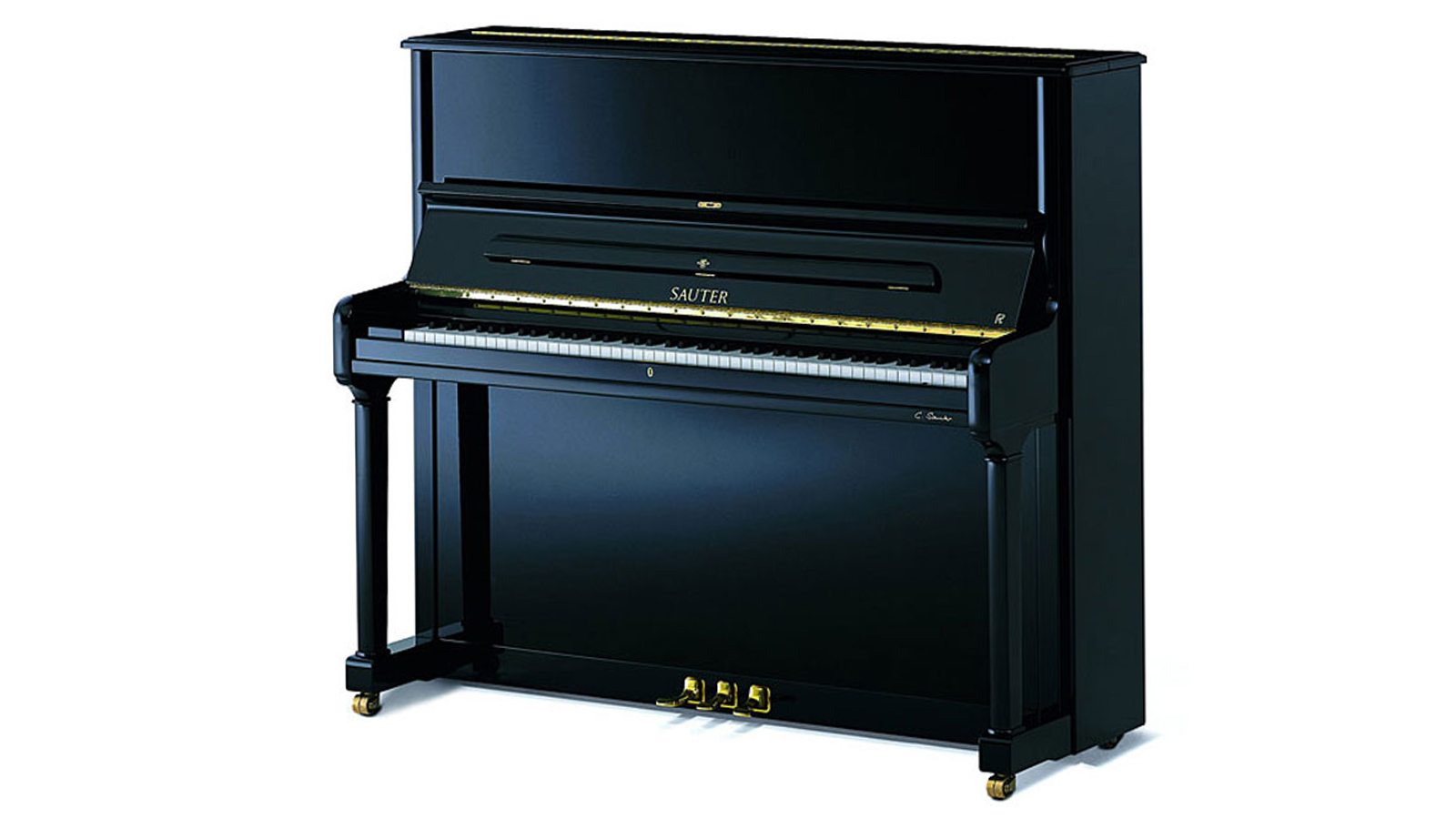
7. Sauter 122 Masterclass
Our expert review:
Specifications
Reasons to buy
Reasons to avoid
The Sauter Masterclass series of premium upright pianos are hand-crafted using the finest quality materials, from the white spruce harvested from a remote Italian valley to create the soundboard – reportedly the same wood used by Stradivarius to craft his violins – to the hand-polished cast iron plate and the walnut cores used in the hammers.
The 122 is the smaller of the two models in the range, the number reflecting the height of the piano in centimetres. As you'd expect from a piano in this price range, luxurious touches abound, including a hydraulic fallboard to prevent sudden dramatic lid closures and an internal, built-in hygrometer to ensure that the correct humidity is maintained within the instrument's casing.
The high-quality materials and extensive craftsmanship involved in the 122's construction, combined with Sauter's unique 'spherical concavity' soundboard design all add up to a beautifully balanced, sparkling sound from bass to treble.
Best concert upright
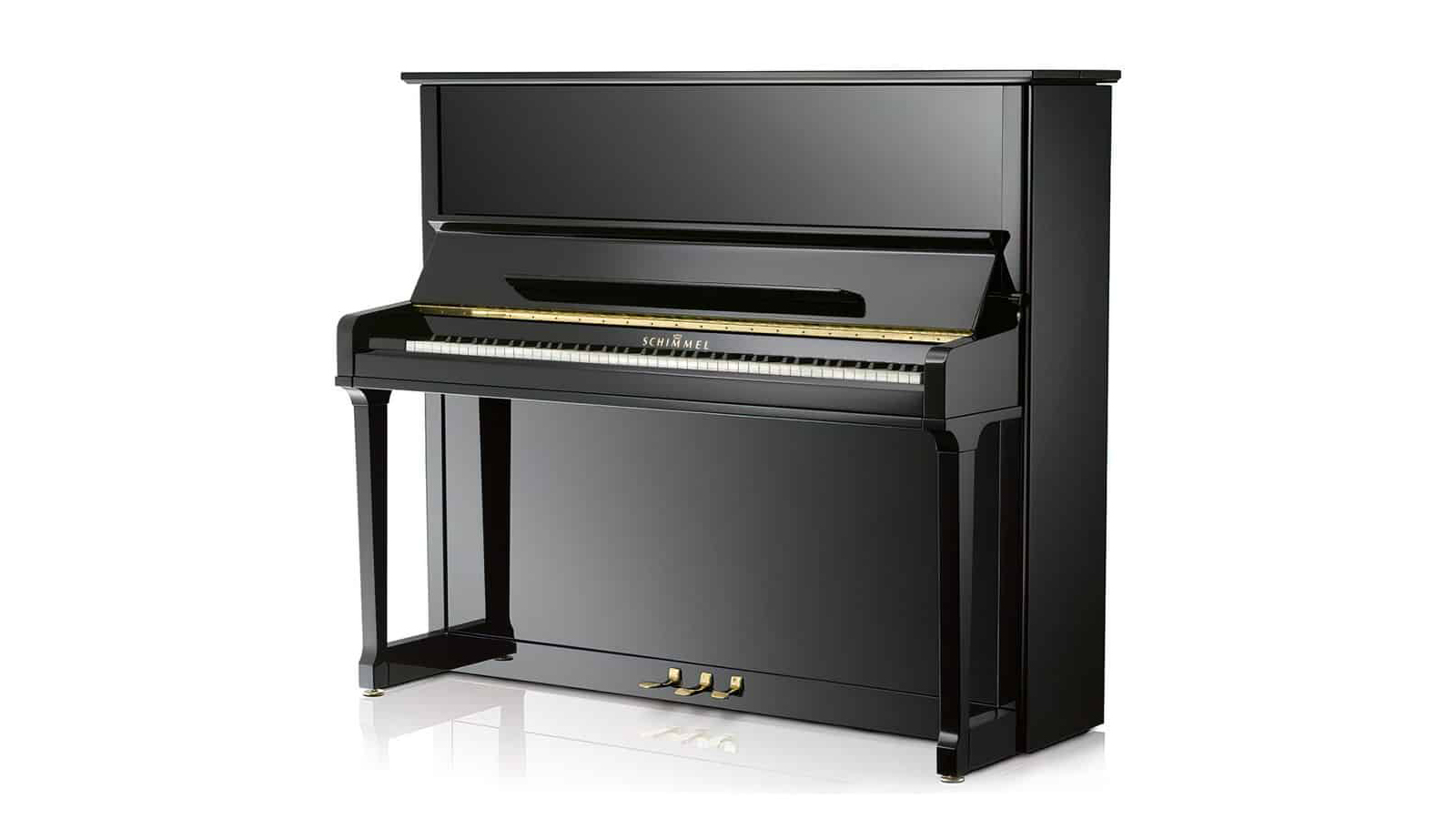
8. Schimmel K132 Tradition
Our expert review:
Specifications
Reasons to buy
Reasons to avoid
German manufacturers Schimmel have been in the piano business since the 19th century, and the K132 – the K stands for ‘Konzert’ – represents the flagship of the company’s current upright piano range. As such, it shares several attributes with its grand piano stablemates in the Konzert line, including the shape of the soundboard and keys fashioned from real ebony.
With a powerful, opulent voice and widely expressive dynamic range, the K132’s effortless action easily allows all the finest nuances within a performance to come through equally across the full range of the keys.
As a bonus, Schimmel’s optional Twintone silent piano system adds the ability to play a digitally sampled Schimmel piano through headphones. This can be added at an additional cost either as a factory order or retrofitted by a qualified dealer to an existing stock piano.
Best pro-level

9. Steinway & Sons K-52
Our expert review:
Specifications
Reasons to buy
Reasons to avoid
Ask anyone to name what the best piano in the world might be, and most people would probably mention Steinway, famous for their ubiquitous, American-built concert grands and quality upright pianos.
Introduced way back in 1903, the K-52’s 132cm height accommodates a larger soundboard than many grand pianos, for a more resonant voice. Coupled with the Steinway brand’s reputation for excellence, this makes it a strong choice for professional players seeking an upright instrument suitable for all sizes of homes and studios.
Handcrafted in the same factory as their grand pianos, using the same techniques, processes and craftsmen, Steinway pianos are built using 125 patented features and design elements, including their Diaphragmatic soundboard, Accelerated Action and Hexagrip pinblock. The result is an impressive upright that responds beautifully to every touch.
Best grand piano
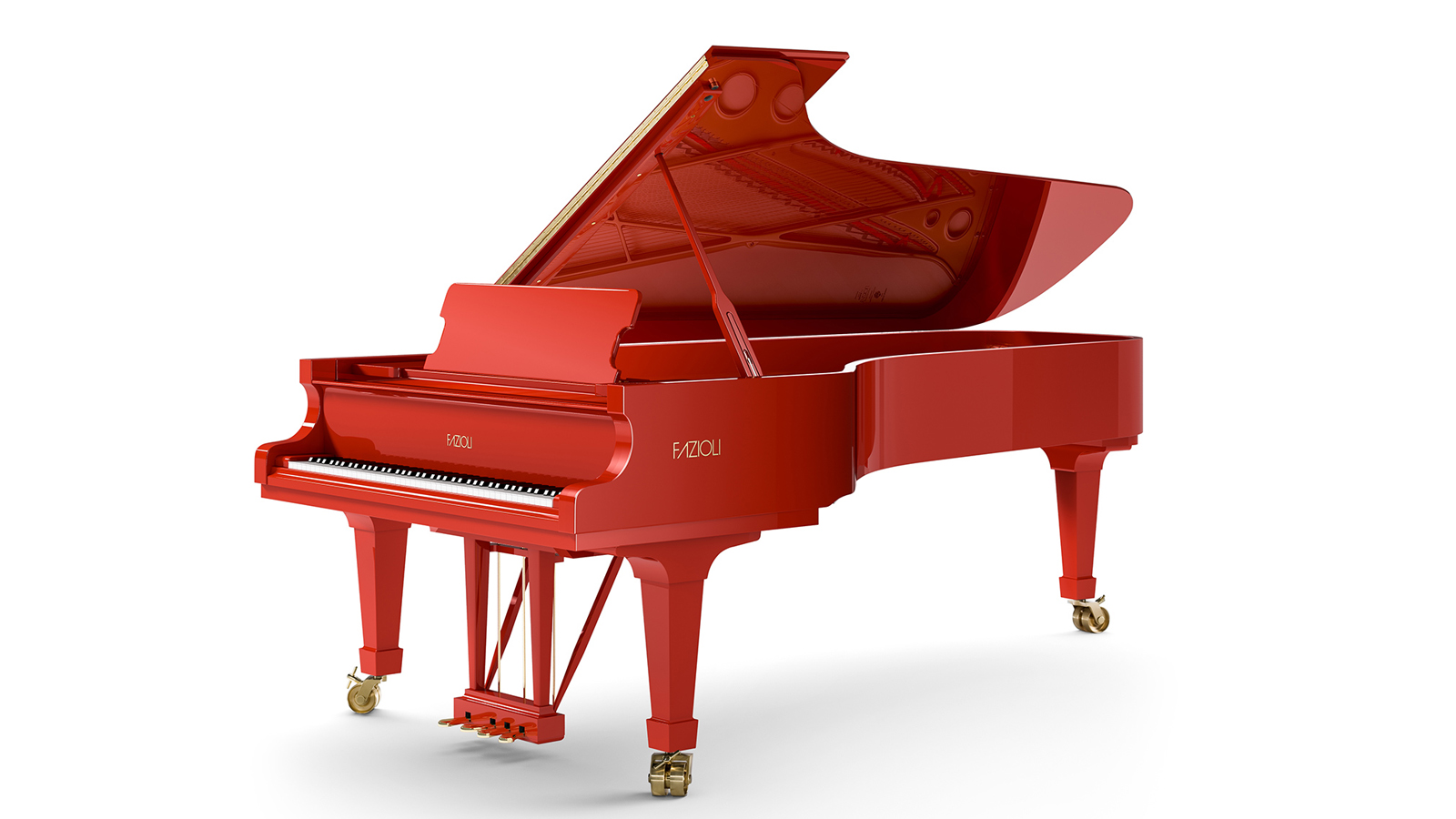
10. Fazioli F308
Our expert review:
Specifications
Reasons to buy
Reasons to avoid
Started in Italy in 1982, which is relatively recently for a piano company, Fazioli is a true family-run business employing about 50 people who turn out only around 140-160 high-end, handcrafted grand pianos a year – each of which can take almost three years to build. The F308 is the largest concert grand model they produce, measuring a whopping 10’2” (308cm) from keys to tail and weighing in at a floor-busting 570kg.
Due to its enormous length, the F308 features extra-long bass strings for extended harmonic richness in the low end. A unique fourth pedal reduces the vertical hammer-to-string strike distance, which in turn lowers the volume without affecting the timbre. This makes it easier to pull off glissandos, pianissima, rapid passages and legatos.
In the short time they’ve been around, Fazioli have wowed the professional piano cognoscenti through their instruments’ innate playability, stunning tone and remarkable capacity for expressive range. Regarded as the jewel in the crown of the Fazioli range, and with an appropriately eye-watering price tag, the remarkable F308 is available in black, white, red, a unique dark blue or a selection of custom wood finishes.
Best acoustic pianos: buying advice
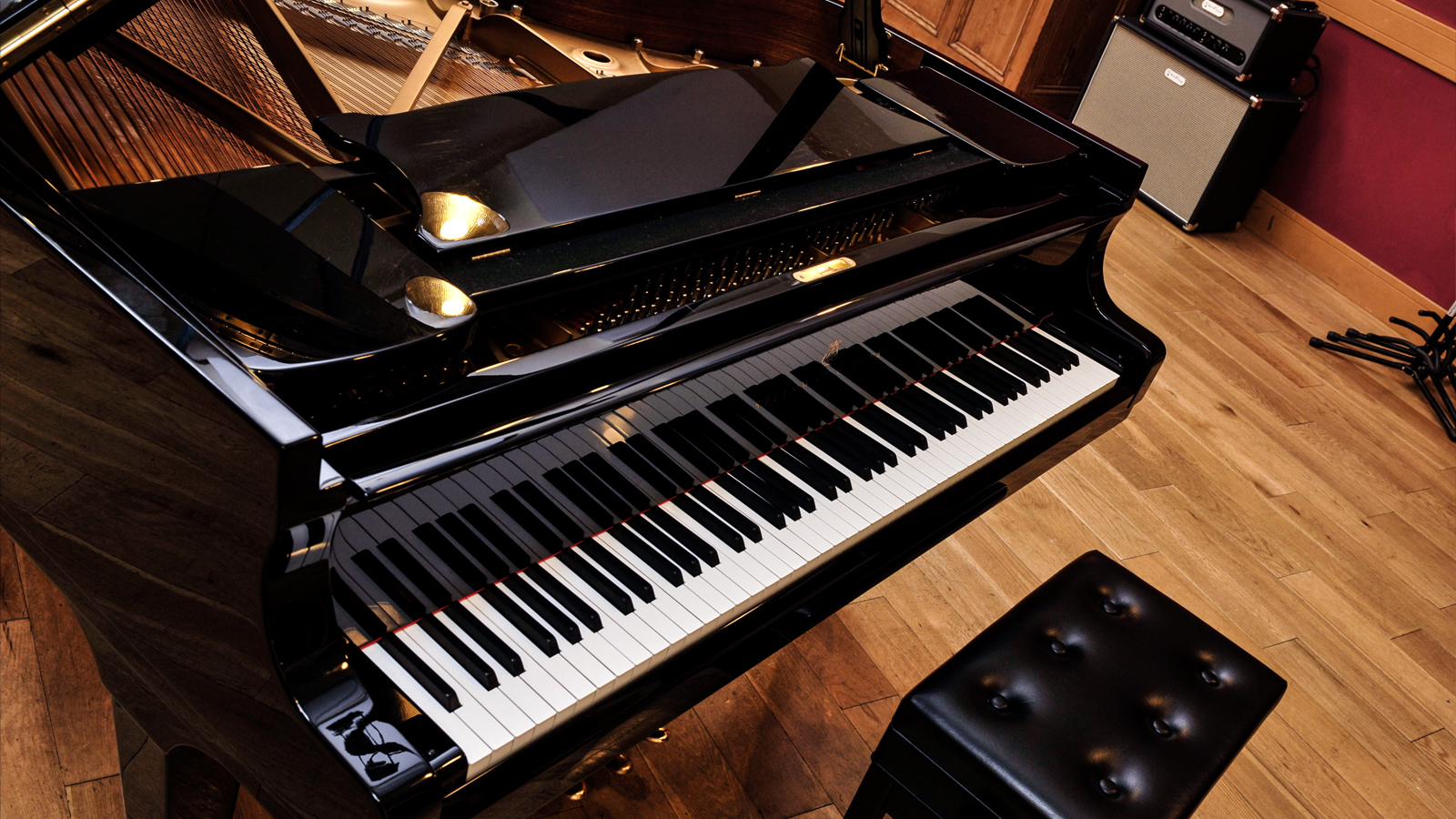
Since many online buyers’ guides don’t seem to differentiate between an acoustic piano and a digital one, this guide is for those who want an acoustic piano made from wood and metal that has strings and a wooden soundboard – the heart of a piano, whose purpose it is to transform the vibrations of the strings into a rich, natural tone – rather than digital keyboards that sound like an acoustic piano. Let's examine some key points in detail.
How much should you spend on an acoustic piano?
With acoustic pianos, the longer the strings and the bigger the soundboard, the better the tone and the more inspiring the instrument will be to play, so it makes sense to go for the tallest upright or the longest grand that your budget allows. Due to the sheer number of man hours involved in building an instrument as magnificent and complex as an acoustic piano, though, they do tend to cost a pretty penny.
For instance, a Steinway & Sons grand piano contains over 12,000 parts, while it’s estimated that a C Bechstein Concert 8 upright piano takes well over 300 hours of skilled labour to complete. Combined with the high-quality materials involved in its construction, this inevitably inflates the price to something well beyond what most of us could reasonably afford.
So acoustic pianos are big ticket items – a brand new one will set you back at least four figures, although there are more budget-friendly options available at the lower end of this range. Around $5,000/£4,000/€4,500 should get you a perfectly serviceable, great-sounding instrument from a reputable manufacturer that should last a lifetime, but don’t forget to factor in the additional cost of regular tuning and maintenance to keep your piano performing at its best.
Acoustic pianos up to $5,000/£4,000
MusicRadar's got your back
When it comes to high quality and affordable acoustic pianos, the two big-hitter manufacturers are Yamaha and Kawai. Buy a budget upright model from either of these two piano brands and you’re likely to end up with a mechanically sound instrument that’ll sound decent and require little in the way of tuning and maintenance throughout its life. It’ll make for a great starter piano and, if you’re serious about learning proper piano technique, an instrument like this will give the correct dynamic response so you can start to develop good piano technique and the ability to control its dynamic range.
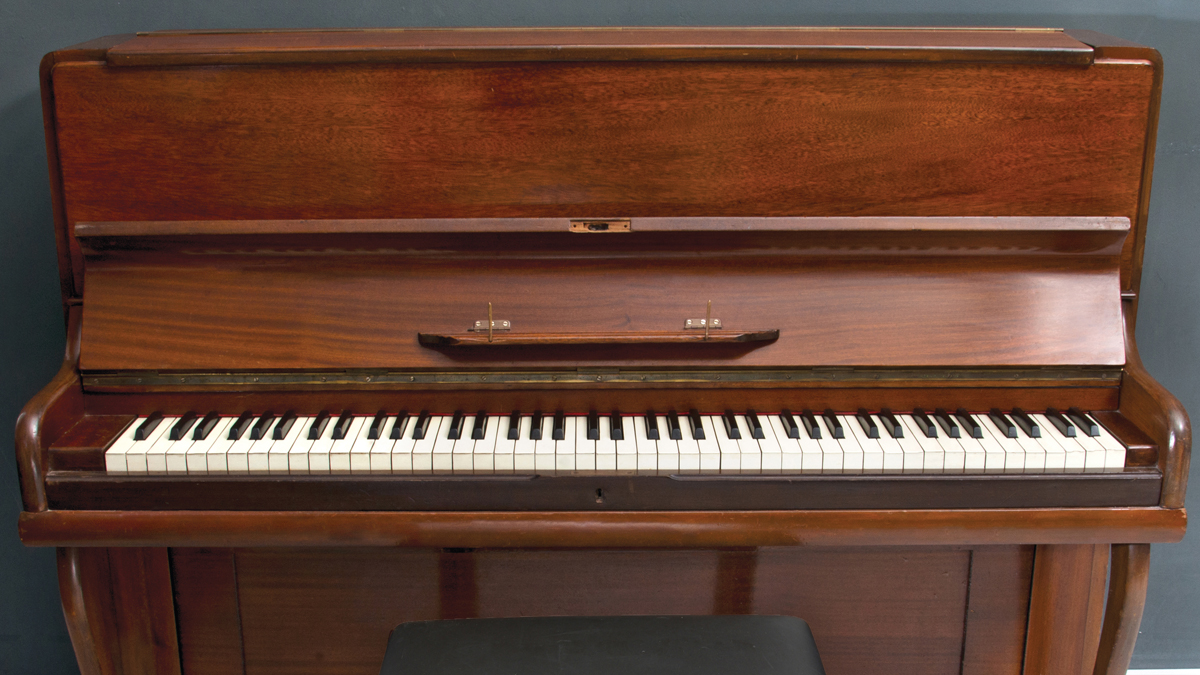
Acoustic pianos $/£4,000 - $/£10,000
The next bracket up gets you an upright instrument of increased height with better tone and higher-quality materials. Alternatively, at the thick end of this bracket you start to come across entry-level baby grand pianos, which are small grand pianos with an overall length of less than around 150cm.
$/£10,000 - $/£20,000
The sweet spot when investing in one of the best acoustic pianos is the high teens, where you can find large, European-built upright pianos that start to outdo the musical performance of a budget baby grand.
$/£20,000 and up
This is where we start to enter the connoisseur's marketplace, largely consisting of high-end European and American-built upright and concert-level grand pianos from makers like Fazioli, Steinway, Bosendorfer and C Bechstein, whose Concert 8 model is one of the most expensive upright pianos in the world.
So why is there such a broad range of prices? The main difference is in the amount of man hours that goes into the manufacture of each instrument. Higher-priced instruments will have a lot more hand-made components and a lot more time spent aligning and regulating each individual part correctly to ensure a properly resonant, fantastic-sounding instrument. Conversely, the build time for purely factory-built instruments is a lot shorter, resulting in a compromise on construction quality and oversight, but a compromise that allows for a much more affordable retail price.

Should I consider buying a second-hand acoustic piano?
Because they are quite cumbersome objects that take up a lot of space, you quite often come across pianos on online classified sites that are listed at a bargain price, or even just free (buyer collects!) simply because the owner just wants to get rid of them to make space. However, you do need to exercise a certain amount of caution with ‘giveaway pianos’, as they’ll often either be very old, or had a very hard life – or both! The older the piano, the more likely it’s going to be to need expensive maintenance that’ll put the overall cost on a par with buying a new one.
If you’re going down the second-hand route, try and aim for a piano that’s been well looked after and tuned regularly, play as many pianos as you can until you find one you like the sound of and take a technician with you if you can. Just like with cars, a well-maintained exterior can sometimes hide shoddy mechanicals, and with all those intricate internal components, there’s a lot to go wrong inside a piano.
Piano dealers often have a selection of used or refurbished pianos in the showroom that people have either part-exchanged for a newer model or simply sold back to the shop. These will obviously be available at a lower price than new, so check out your local dealers and music shops to see if you can spot a bargain. You may also be able to get a great deal buying at a specialist piano auction house.
Logistics
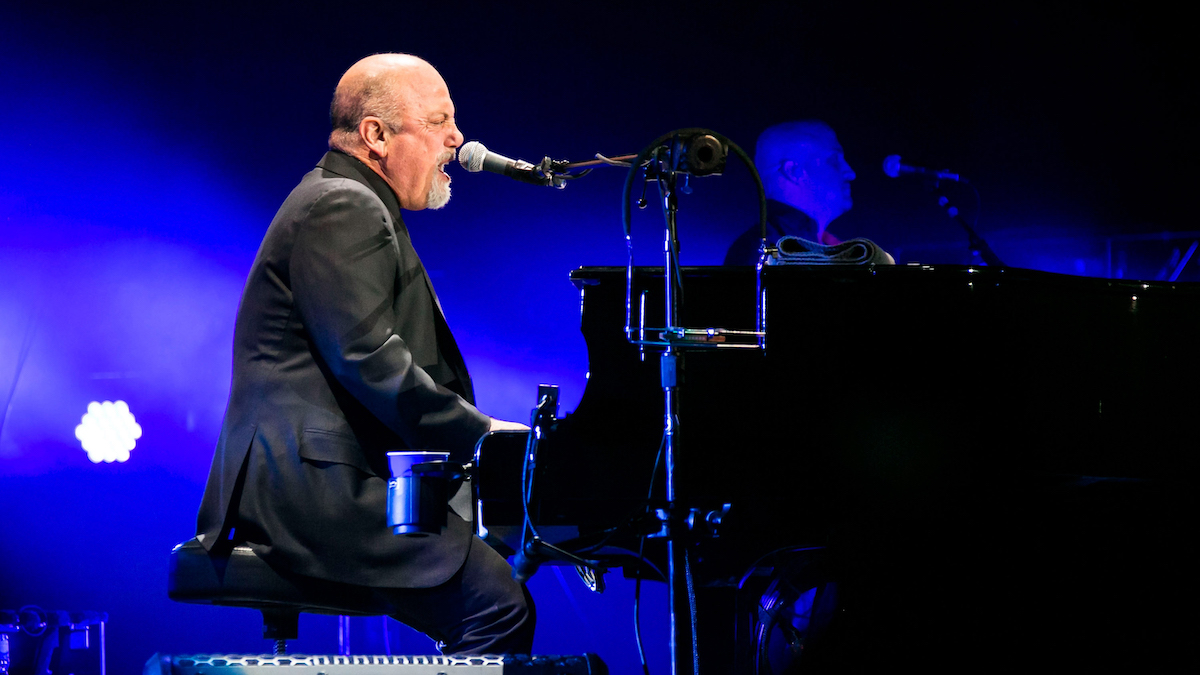
10 of the best pianists of all time
Due to the iron frame, large number of steel strings and solid wood construction, it goes without saying that acoustic pianos are incredibly heavy, usually weighing around 200kg and upwards. This means that you won’t just be able to purchase one on a whim from a shop and take it home with you. Most retailers offer some kind of delivery service, but don’t forget that this can cost extra, as it will need to be carried out by a team of professional piano movers. Attempting to move the piano yourself, especially if it’s a grand piano, is likely to incur damage either to yourself, the piano, or both, so please approach with caution.
If your location has easy, ground floor access within a certain radius of the retailer, delivery may well be included in the purchase price. Remember to let the retailer know if you need the piano to be located upstairs, however, as this may incur an extra charge – and if it’s a grand piano, you may even need to look into having the floor reinforced to accommodate the extra weight. Pianos are complicated and sensitive instruments that don’t like change and the trauma of moving them means that they invariably need time to settle into their new home. To that end, retailers will often throw in a complimentary first tuning to sweeten the deal.
Upright vs grand piano
Unless money really is no object, the chances are that you’re going to be looking at an upright acoustic piano rather than a grand or baby grand piano. The conventional thinking is that if you can afford a baby grand piano, always go for that over an upright, but that’s not always necessarily the case. There are several reasons why an upright piano might be more suitable for you.
Grand pianos are generally performance instruments, designed to project the sound of the instrument out to an audience. However, from a player’s perspective, an upright instrument can provide a more inclusive experience for the pianist, as the soundboard and strings are directly facing you, the player. This is one reason why the upright format may be considered more suitable for the home environment. Also, a tall upright piano will have a larger soundboard and longer strings than a small, entry-level baby grand, so is likely to have a better tone overall for around the same money, or even less.
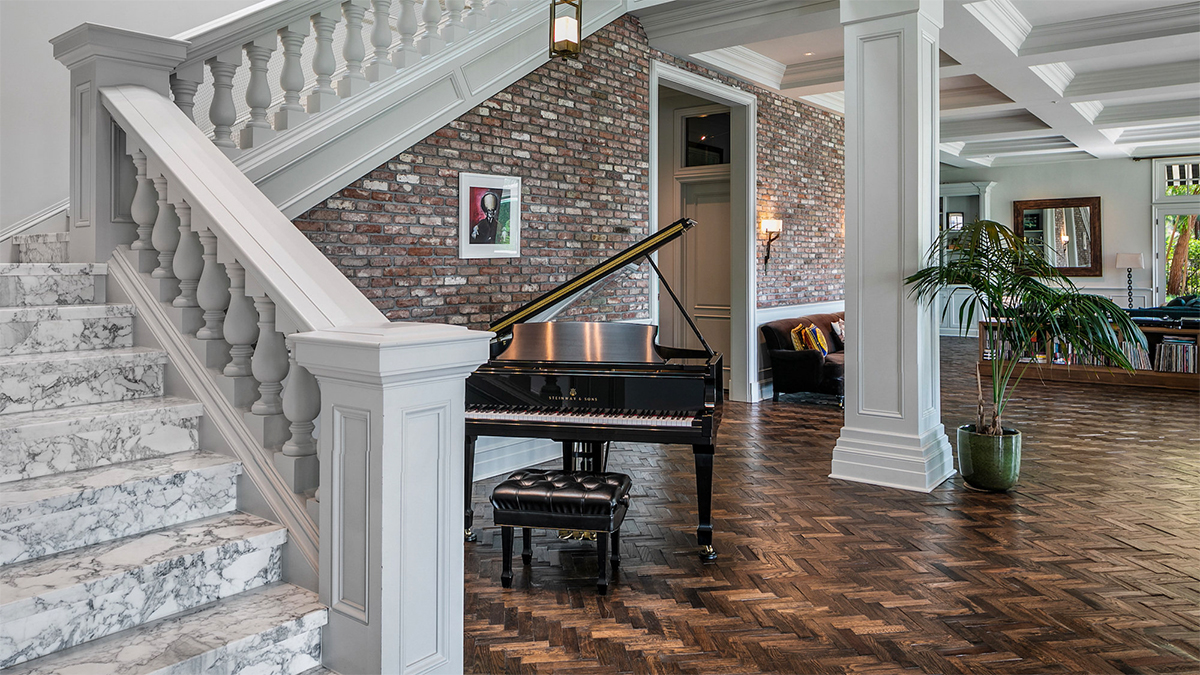
Environment
You'll need to give some thought to whereabouts in your home your piano is going to live. Space – or lack of it – is the most obvious consideration, since upright pianos take up a lot less floor space than their grand cousins. This makes them a much more suitable choice for smaller properties, where they can be placed out of the way against a wall instead of dominating an entire corner of a room. Upright pianos need an area of around 1.5 square metres, including space for the player and piano bench. Grand pianos need a similar 1.5m width, but a length of anywhere between 1.4 to 3m, depending on the model, plus another 0.6m for the pianist and stool.
Not only is space a concern, but also bear in mind the atmosphere of the room in which you’re thinking of housing the piano. Try to avoid positioning it near any radiators, fireplaces, heating vents, direct sunlight or air conditioners, since excessive heat, humidity, damp or rapid changes in temperature can all adversely affect your piano’s tuning and internal components. Once your piano has settled in, the lack of a headphone socket means that you'll need tolerant neighbours if your piano is positioned against a party wall.
Hybrid / silent technology
Although the basic design of the piano has remained virtually unchanged for centuries, technical innovation has come on leaps and bounds in the world of acoustic pianos over the last few years, with most major manufacturers bringing their own hybrid and silent options onto the market. What exactly do these terms mean though?
Silent pianos offer a combination of the feel and sound of an acoustic piano with many of the convenience factors of a digital instrument, namely a selection of built-in digital sounds that you can play using headphones. They use technology that stops the hammers striking the strings, instead using sensors to trigger digital piano samples from an onboard sound module through the headphone output or speakers, allowing for silent practice. Although generally more expensive because of the additional features, this type of piano is becoming increasingly popular, with many manufacturers from traditional backgrounds now allowing you to order your new piano with the option of silent technology.
Conversely, hybrid pianos are digital instruments that incorporate acoustic piano actions. Hybrid pianos have the touch response of an acoustic piano’s keyboard mechanism, but there’s no acoustic element and no strings, so all the sound is produced digitally either through headphones or traditional speakers.
Find out more about how we test music gear and services at MusicRadar.
- Digital piano vs acoustic piano: what's the difference?
How we chose the best acoustic pianos
Here at MusicRadar, we are experts in our field, with many years of playing, creating and product testing between us. We live and breathe everything music gear related, and we draw on this knowledge and experience of using products in live, recording and rehearsal scenarios when selecting the products for our guides.
When choosing what we believe to be the best acoustic pianos available right now, we combine our hands-on experience, user reviews and testimonies and engage in lengthy discussions with our editorial colleagues to reach a consensus about the top products in any given category.
First and foremost, we are musicians, and we want other players to find the right product for them. So we take into careful consideration everything from budget to feature set, ease of use and durability to come up with a list of what we can safely say are the best acoustic pianos on the market right now.
Find out more about how we test music gear and services at MusicRadar.
Related buyer's guides
- The best online piano lessons: top software, apps and websites
- Our pick of the best electronic keyboards for every budget
- Don't forget about these essential piano accessories
- We quash any worries you may have about ordering a piano online
- Just starting out? Here are the best digital pianos for beginners
- Don't forget to pick up one of the best music stands
- How to clean your piano keys, step-by-step
Want all the hottest music and gear news, reviews, deals, features and more, direct to your inbox? Sign up here.
Dave has been making music with computers since 1988 and his engineering, programming and keyboard-playing has featured on recordings by artists including George Michael, Kylie and Gary Barlow. A music technology writer since 2007, he’s Computer Music’s long-serving songwriting and music theory columnist, iCreate magazine’s resident Logic Pro expert and a regular contributor to MusicRadar and Attack Magazine. He also lectures on synthesis at Leeds Conservatoire of Music and is the author of Avid Pro Tools Basics.
